Arts and Crafts Movement – A 19th Century Revival of Artistry
The late-19th century was a period of intense cultural change across the United Kingdom and America, which saw the rebirth of new standards around design in light of the complex impacts of industrialization on labor, society, and the decorative arts. In this article, we will introduce you to all you need to know about the Arts and Crafts movement that led to the complete reform of all things manufacturing and design in the late-19th century. Keep reading for more about this significant art movement!
Contents
A Revival of Artistry: Origins of the Arts and Crafts Movement
What did the art world at the turn of the 19th century look like? One of the most impactful movements in the fields of fine art and design occurred in the late-19th century as a response to the realities of industrialization, which promoted mass production and infiltrated Victorian society. This movement is recognized as the Arts and Crafts movement and originated in Britain as a widespread movement motivated by many factors. Among the many goals of the movement was the preservation of traditional skills and craftsmanship, which was highly undervalued. Many artists of the Arts and Crafts movement sought to reaffirm the beauty of handcrafted artworks and objects, and strove toward more authentic forms of artistry.
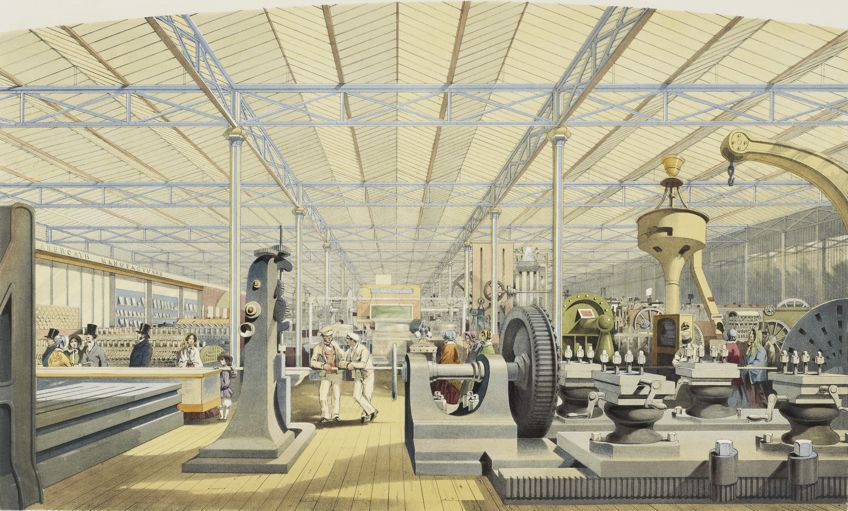
Prominent artists behind the movement include figures such as John Ruskin, William Morris, and Charles Rennie Mackintosh who proved incredibly influential to the spread of the movement. At the heart of the Arts and Crafts movement was the desire for a recognition of crafts as a valid art form and was a widespread fusion of art and crafts, such that fine art began to include the notion of the everyday object. The foundations of the movement were built on the importance of functional and well-designed items that were both utilitarian and held aesthetic value.
The Arts and Crafts movement was an outright rejection of assembly-line production and saw many artists embrace labor-intensive techniques and natural materials into their processes.
The Arts and Crafts movement is also recognized as the period that saw the revival of traditional craftsmanship, which impacted the fields of textile production, interior design, and architecture. The main philosophy behind the Arts and Crafts style was the idea of social and economic reform that prioritized the labor of craftsmen and artists alike. As such, the movement played a crucial role in the development of the modern design movement, which influenced the origins of other art movements such as the Bauhaus and Art Nouveau movements.
Exploring the Arts and Crafts Movement in Britain
In Britain, the Arts and Crafts movement was inspired by the writings of the famous designer A. W. N. Pugin, who promoted the Gothic Revival, as well as the art critic and theorist John Ruskin, who advocated for honest craftsmanship and quality materials by promoting Medieval architecture. Another influential figure of the British Arts and Crafts movement was the Socialist William Morris, who pinpointed the fact that industrialization was a dehumanizing process that alienated the designer from the manufacturer. In terms of interior and home décor, Morris sought to unite all aspects of decorative art with an emphasis on simplicity of form and nature at the forefront of his beliefs. Followers of the movement believed that the connection that existed between the artist and the artwork through handcrafts was the key to achieving human fulfillment and creating beautiful items that could be incorporated into everyday life.
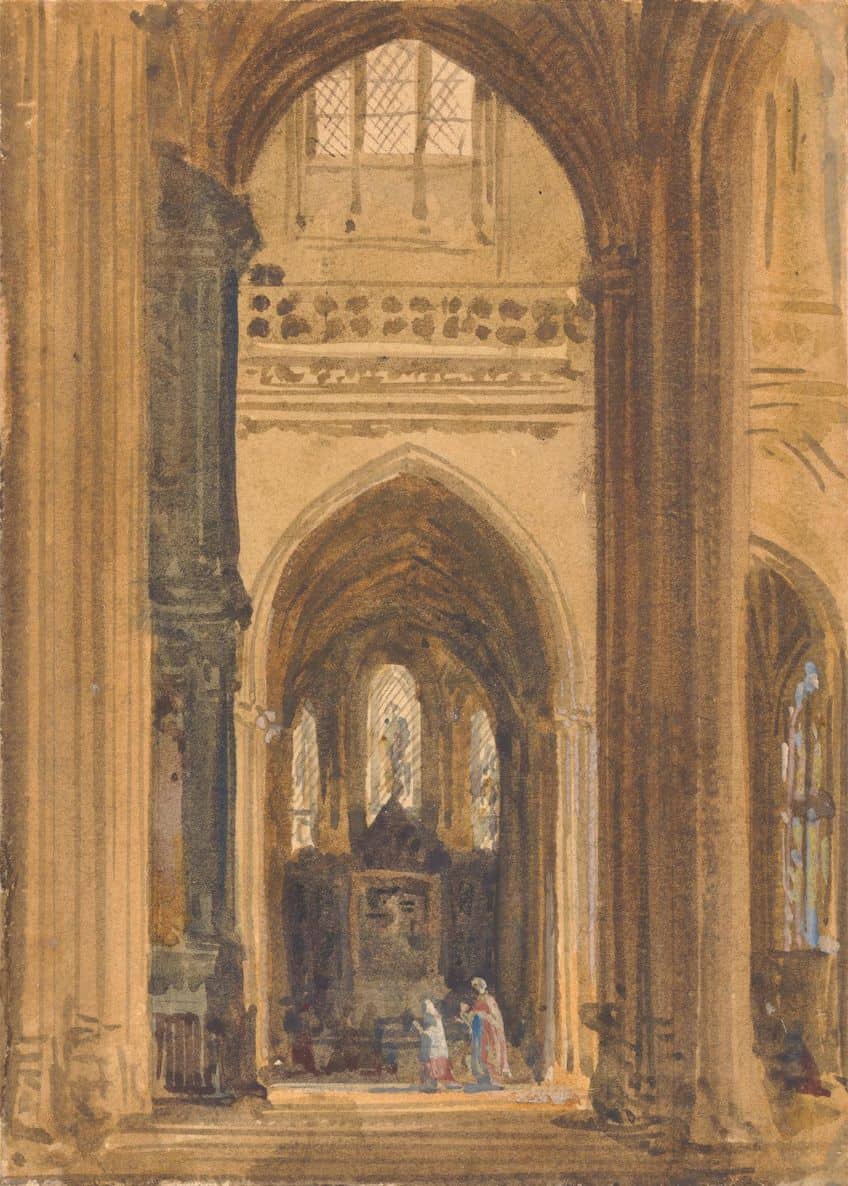
William Morris and the Red House
One of the most important Arts and Crafts movement examples from Britain was the design of the Red House, which was the familial residence of William Morris and was initially built in the countryside as the first house designed by Philip Webb. Webb was a significant member of the movement who was dubbed “the father of Arts and Crafts architecture”. Webb was a prolific English architect who established the foundations of architecture in the Arts and Crafts style and inspired many architects through the Red House and many other projects. The Red House was designed as asymmetrical and L-shaped with steep rooflines that echoed the influence of the Gothic style.
The brick house also had a tiled roof and was simple in its design such that Morris often spoke purely of his home as simply his place of residence.
The interior of his home, however plain the exterior may appear, was filled with murals by Edward Burne-Jones for an ornate touch. One may not recognize the bold idea of designing a simple home, however, at the time, most residences were designed almost pretentiously with elaborate detailing in prevailing Victorian styles. Morris’ home was also located away from London’s center, which provided him with a sense of harmony and nature in the countryside.
In keeping with Morris’ Socialist outlook, his home was also designed with larger than usual servants’ quarters, which reflected his desire to rid himself of class distinctions in architecture. Since the house was located too far out for Morris, he eventually sold it after five years and moved to London at a home nearby his firm. It is important to note that Morris was already an internationally renowned designer and manufacturer since the 1880s, and as such, proved to be a significant influence on the movement and its adoption. Morris strongly advocated for the return of small workshops as the primary sites for production instead of mass-production settings.
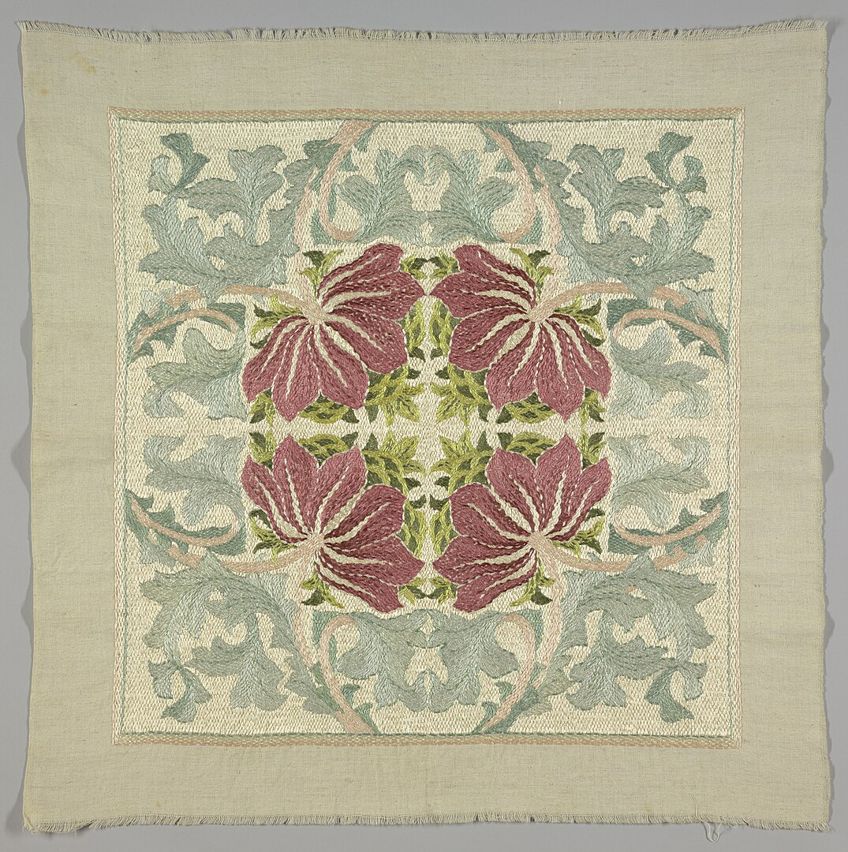
While Morris advocated for an ideal system without the use of many machines, he also acknowledged the role of technology in increasing efficiency. Victorian Britain had then fully embraced the factory systems of production and manufacturing, which shocked many people of Morris’ era. At the backbone of the movement was also Morris’ will to free the working class from the repetitive and frustrating motions of a normal working day in the factory.
Mary Morris at Morris & Co.
It is important to recognize that the 20th century was not as open to women in the arts as one might expect. Institutions like the Art Workers’ Guild discriminated against women and only opened their doors to women by the mid-20th century. Regardless, there were many women in the Arts and Crafts movement who contributed to its development and spread. These include figures like May Morris, the daughter of William Morris, who embraced embroidery designing and began managing the embroidery department for Morris & Co. when she was just 23 years of age. During her career, she created many unique designs, many of which were wrongfully credited to her father. In 1907, May Morris established the Women’s Guild of Arts to accommodate for the lack of representation for female artists.
One of her best-known works includes the Horn Poppy Wallpaper design, which Morris created in 1885 and is currently housed at the Victoria and Albert Museum in London.
The Gothic Revival in Architecture and the Decorative Arts
At the origins of the Arts and Crafts movement was also the revival of the Gothic style in architecture, which peaked around the 1870s, and was founded on an ornamental Medieval style of architecture. The Gothic Revivalists of the late 19th century lasted well into the 20th century and by the 1950s, Gothic architecture was still a popular choice for many in the United Kingdom, supported by the establishment of the Victorian Society. The origins of Gothic architecture find themselves in 1140 CE with the construction of the Basilica of Saint-Denis in Paris.
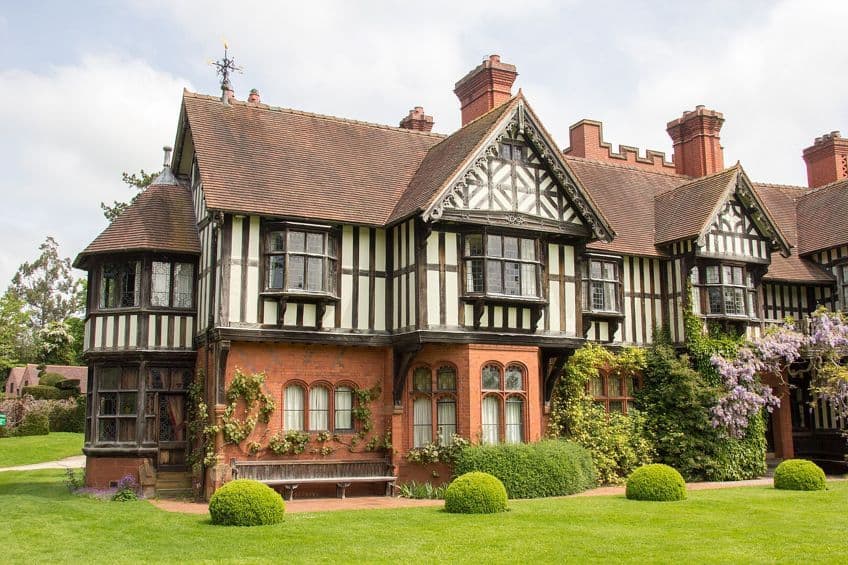
Apart from the Gothic style surviving centuries of stylistic preferences in architecture, it had a significant impact on the decorative arts scene. Gothic styles found themselves in the decorative arts of the 19th century in ceramic art, furniture design, and metalwork, which emerged as a rejection of Neoclassicism in France. Around 1830, the Gothic Revival was once again seen in various motifs that emerged in France along with the styles of the Rococo and Renaissance periods.
At the time, there was a growing interest in all things Medieval, and this led to many craftsmen adopting the decorative motifs of Gothic designs, including lancet arches, bell turrets, rose windows, trefoils, and Gothic tracery. Other Arts and Crafts movement examples include architectural styles such as the Troubadour or Cathedral style.
Although it was assumed that Romanticism stirred the resurgence of the Gothic style, its primary influence can be attributed to the work of French archaeologists such as Alexandre Lenoir, who restored the collection of the Museum of French Monuments with works from the Middle Ages.
The Spread of the Arts and Crafts Movement
While Morris was one of the most famous figures of the Arts and Crafts movement in Britain, other figures such as Augustus Pugin also impacted the spread of the movement. Pugin was a prominent member of the Design Reform Movement and a renowned supporter of the Gothic revival, who challenged the notions of design and décor through the fashion industry and advocated for the use of Medieval standards across design and British culture. By 1882, figures such as Arthur H. Mackmurdo, a famous designer and architect, helped establish the Century Guild for Craftsmen, which became one of the most important guilds of the movement in Britain. Members of the guild contributed to the revival of hand-printed artwork and pioneered the belief that there were no differences between the decorative and the fine arts.
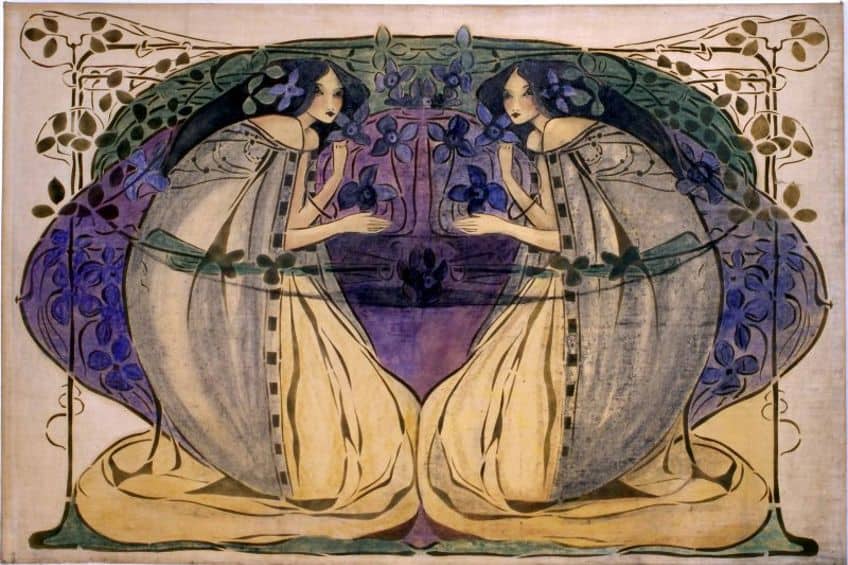
At the turn of the 19th century, the movement had already spread into multiple cities across the United Kingdom, including Birmingham, London, Glasgow, and Manchester. These cities grew into urban centers that enabled the establishment of various forums and organizations funded by wealthy patrons in support of the Arts and Crafts movement. From 1895 until 1905, the movement gained significant traction in its social mission and allowed for the creation of more than 100 organizations, which promoted the principles of the British Arts and Crafts movement. As the ideas of the Arts and Crafts movement spread across Europe, it became increasingly popular among followers of the Art Nouveau movement.
The American Arts and Crafts Movement
The spread of the Arts and Crafts movement was expedited by figures like William Morris who traveled frequently to the United States and disseminated the original ideals of the British Arts and Crafts movement. Literature and media played an important role in the influence and spread of the movement and were most notably publicized in publications such as The Studio and many other sponsored programs and lectures. The American Arts and Crafts movement involved the formation of nationwide societies such as those in Boston, which were historically connected to British culture and was the first city to establish a Society of Arts and Crafts in 1897.
Another society was formed at Hull House in Chicago and was among the first American settlement homes for social reform established in the same year.
The last few years of the 19th century saw numerous other societies emerge in multiple cities, including New York, Massachusetts, and Minneapolis. Places like Rose Valley in the United States became famous for their use of Socialist ideals, as well as social and artistic experiments. Rose Valley was founded by an architect named William Lightfoot Price in 1901 in Pennsylvania. The community was focused on producing artistic hand-crafted goods, which included pottery, metalwork, furniture, and bookbinding. Another famous Arts and Crafts community was the Byrdcliffe Arts and Crafts Colony, which was established by Ralph Radcliffe Whitehead and Jane Byrd McCall Whitehead around 1903. Here, artisans produced textile artwork in addition to woodwork, metalwork, and other art forms.
Many “social experiments” occurred in small communities within the urban centers and were aimed at educating women in the field of handcrafted and decorative artwork such as metalwork and pottery. Quality design was one of the leading themes of education in the Arts and Crafts movement that was incorporated into different training programs and schools. Important organizations like the Saturday Evening Girls Club were established in Boston in 1899 and were a reading club for immigrant women. Another club was the Paul Revere Pottery group, which focused on pottery and offered immigrant women the opportunity to pick up new skills and earn money at the same time. Other major educational groups included Newcomb Pottery founded by the H. Sophie Newcomb Memorial College in New Orleans. This organization was focused on producing pottery as well as textile and metalwork.
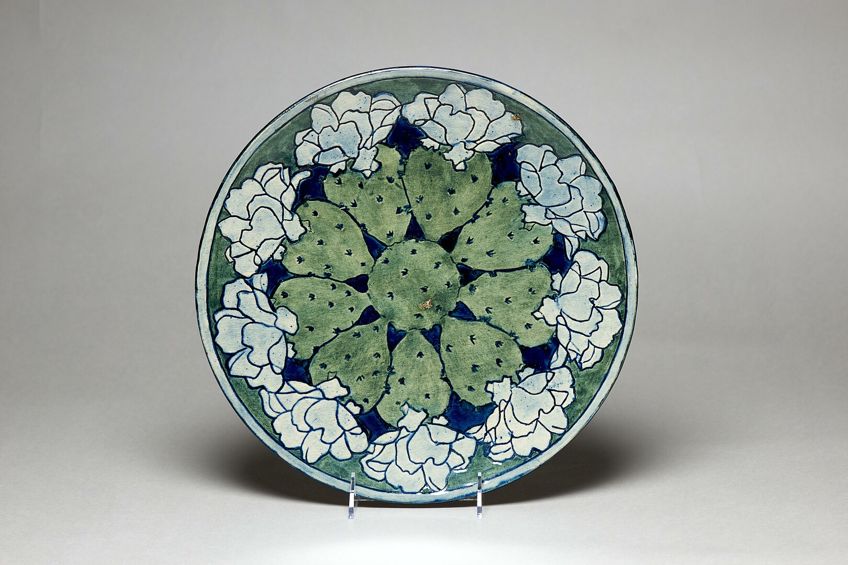 Newcomb Pottery (nd); Tulane Public Relations, CC BY 2.0, via Wikimedia Commons
Newcomb Pottery (nd); Tulane Public Relations, CC BY 2.0, via Wikimedia Commons
The American Arts and Crafts movement was centered on the upliftment of women through education in the decorative arts. Jewelry design and production were also at the forefront of the movement, which involved selected stones used for artistic purposes and resulted in significant works of art that brought a sense of authenticity and quality to jewelry and their materials. Important figures in jewelry design and education included Florence Koehler, who taught jewelry, metalsmithing, and fine china painting to members of the Chicago Arts and Crafts Society. Koehler often referenced Renaissance designs and other historical sources for her work. Other jewelry designers include Marie Zimmermann, who later produced ornamental home and garden products. Zimmermann drew inspiration from sources such as Greece, China, and Egypt to inform her designs.
Gustav Stickley and The Craftsman (1901 – 1916)
Design champion Gustav Stickley was one of the most influential and impactful figures of the American Arts and Crafts movement who founded The United Crafts organization, later recognized as the Craftsman Workshops. Stickley supported the ideals of William Morris through furniture manufacturing and believed that mass-produced goods were inherently poorly manufactured and too complicated in their designs. Stickley found his mission in the movement to enhance the visual languages of the American decorative arts and governed his designs by employing simple lines, quality materials, and honest manufacturing. Stickley also founded one of the most influential publications called The Craftsman, which lasted between 1901 and 1916.
Stickley used the magazine to promote the philosophies of the Arts and Crafts movement as well as his products, which were advertised in the form of articles and reviews. Stickley paid tribute to the philosophies of John Ruskin and William Morris in his first two issues of The Craftsman.
By 1902, Stickley collaborated with the famous sculptor Jerome Connor, who led Stickley’s metalwork unit while the architect E. G. W. Dietrich assisted with designs and other editions of the magazine. Around 1904, Stickley’s furniture significantly improved to encompass lighter shapes, tapered legs, and other experimental forms and inlays for decoration. Stickley’s furniture was highly popular among collectors who admired the works produced between 1900 and 1904. Decades later, around 1988, Stickley’s work was also purchased by American singer and actress Barbra Streisand, who paid $363,000 for a sideboard from the designer’s collection. Streisand later sold the same piece for $540,000 to an anonymous buyer and was housed in the collection of the Two Red Roses Foundation. Stickley’s philosophy was based on the phrase “Ala Ik Kon”, which means “the best of my ability” and was identified as his company’s trademark, promoting the principles of simplicity, honesty, and truth.
Frank Lloyd Wright and the Prairie School
Prolific 20th-century American architect Frank Lloyd Wright was another key figure in American Arts and Crafts architecture, whose 70-year career resulted in over 1000 iconic structures that promoted the principles of the Arts and Crafts movement. Wright pioneered a new architectural style defined as the Prairie School, which was characterized by features such as horizontal lines, open spaces, and low-pitched roofs. Wright placed organic materials such as wood, stone, and clay at the forefront of the style, which revolutionized American architecture and interior design. The minimalistic style of Prairie School included natural surfaces incorporated in furniture and was developed further by architects such as George Grant Elmslie and William Gray Purcell.
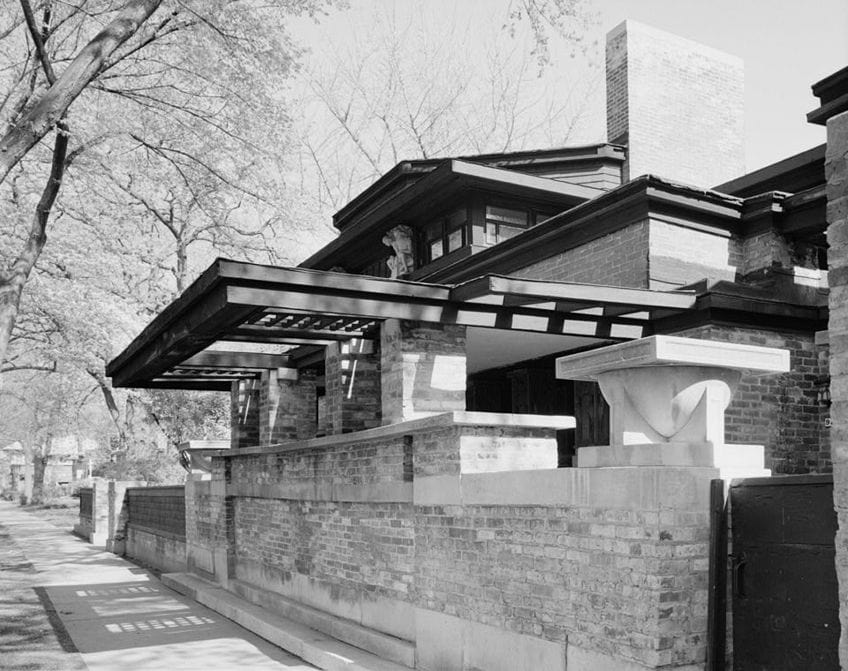
The Arts and Crafts movement left a profound impact on the world of art and design that went on to influence art styles beyond the early 20th century. The movement highlighted the importance of craftsmanship and aimed to preserve traditional skills to foster an appreciation for the decorative arts. The movement not only promoted a sense of community among urban societies, but it also educated and uplifted many women in art. In learning more about such movements, perhaps you too can develop an appreciation for art with an individual touch!
Frequently Asked Questions
What Was the Arts and Crafts Movement?
The Arts and Crafts movement was a British movement that emerged in the late-19th century and was aimed at shifting the focus of society on the appreciation of the decorative arts and handcrafted goods. The movement was a response by architects, designers, artisans, writers, and artists to the mass-production culture of industrialization and the desire for quality artworks and goods.
What Were the Characteristics of the Arts and Crafts Movement?
Among the primary characteristics of the British and American Arts and Crafts movement were the principles of simplicity, beauty, quality, and honesty. The movement was also defined by a focus on the beauty of materials and was inspired by nature and utility.
Who Were the Two Pioneers of the Arts and Crafts Movement?
The two pioneers of the British Arts and Crafts movement were John Ruskin and William Morris, who led the reform movement and were considered the most influential figures of the movement in architecture and design.
Liam Davis is an experienced art historian with demonstrated experience in the industry. After graduating from the Academy of Art History with a bachelor’s degree, Liam worked for many years as a copywriter for various art magazines and online art galleries. He also worked as an art curator for an art gallery in Illinois before working now as editor-in-chief for artfilemagazine.com. Liam’s passion is, aside from sculptures from the Roman and Greek periods, cave paintings, and neolithic art.
Learn more about Liam Davis and about us.
Cite this Article
Liam, Davis, “Arts and Crafts Movement – A 19th Century Revival of Artistry.” artfilemagazine – Your Online Art Source. August 31, 2023. URL: https://artfilemagazine.com/arts-and-crafts-movement/
Davis, L. (2023, 31 August). Arts and Crafts Movement – A 19th Century Revival of Artistry. artfilemagazine – Your Online Art Source. https://artfilemagazine.com/arts-and-crafts-movement/
Davis, Liam. “Arts and Crafts Movement – A 19th Century Revival of Artistry.” artfilemagazine – Your Online Art Source, August 31, 2023. https://artfilemagazine.com/arts-and-crafts-movement/.



very nice